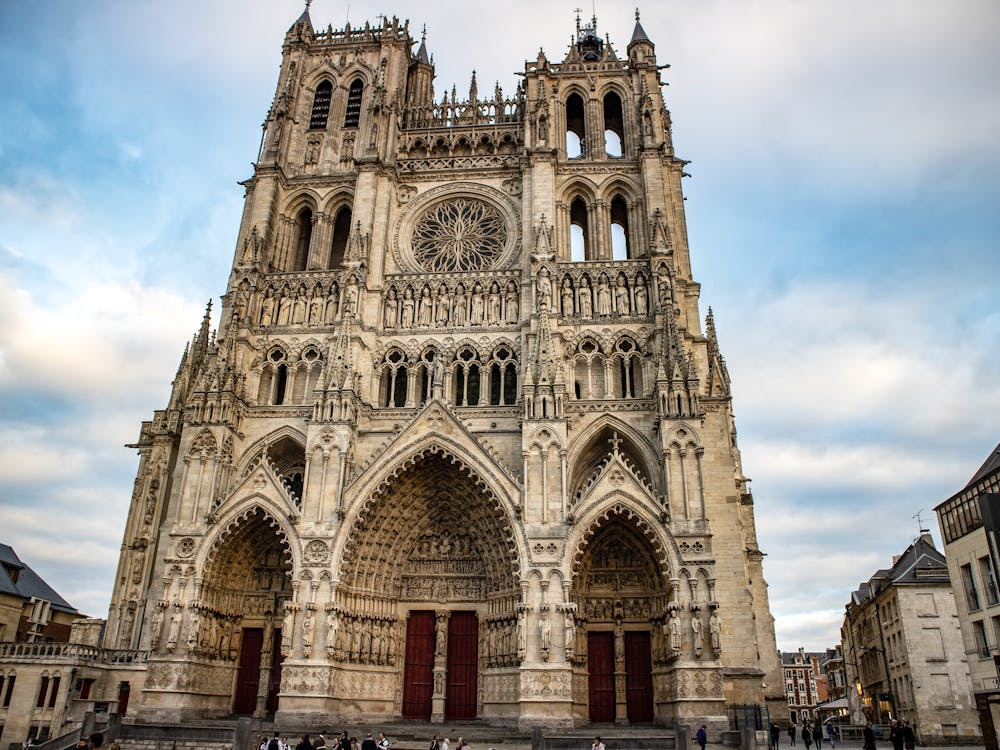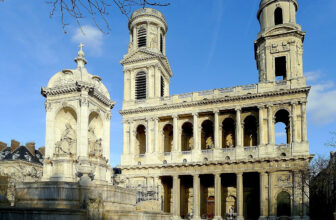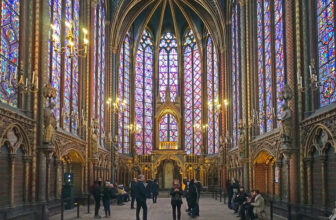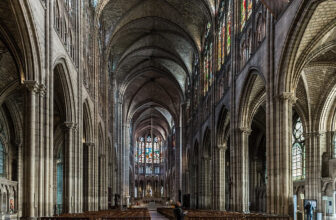
What happened to Reims Cathedral Paris?
The majestic Reims Cathedral, officially known as the Cathedral of Notre-Dame de Reims, stands as a monumental symbol of French history, art, and faith. Located in the heart of Reims, a city in the Champagne region of France, this Gothic masterpiece has witnessed centuries of triumph, tragedy, and transformation. Its story is one of resilience, rebirth, and enduring cultural significance.
The Beginnings of a Monument
The history of Reims Cathedral stretches back to the 5th century when Reims became a center of Christianity in France. The original structure on the site was a Roman basilica, which served as the seat of the bishop of Reims. Over time, as Christianity spread and the importance of the city grew, the need for a grander, more imposing church became apparent.
Construction of the cathedral as we know it today began in 1211 under the direction of Archbishop Aubry de Humbert. The architect chosen for this ambitious project was Jean d’Orbais, who laid the foundation for one of the most stunning examples of French Gothic architecture. The design of Reims Cathedral was revolutionary for its time, featuring soaring spires, intricate stonework, and expansive stained glass windows. Its construction continued for over a century, with contributions from multiple architects who each added their unique touch while adhering to the overarching vision of grandeur and spirituality.
By the 14th century, the cathedral had become a defining landmark of Reims and a key symbol of the French monarchy. It was here that French kings were traditionally crowned, a tradition that began in 987 with the coronation of Hugh Capet and continued for nearly 800 years. The cathedral’s association with the monarchy cemented its status as a cultural and political icon.
The Coronation of Kings
Reims Cathedral earned its epithet as the “Coronation Cathedral” due to its pivotal role in the crowning ceremonies of French monarchs. The tradition was rooted in the baptism of Clovis I, the first King of the Franks, by Saint Remigius in Reims in 496. This event marked the beginning of the French monarchy’s association with the divine.
From then on, Reims became the chosen site for royal coronations. Each ceremony was a grand spectacle, steeped in ritual and symbolism. The cathedral’s high altar was the focal point, where kings received the Holy Ampulla, a vial of sacred oil said to have been brought from heaven by a dove. The anointing of the king was seen as a divine endorsement of his rule, reinforcing the unity of church and state.
Among the most famous coronations held at Reims Cathedral was that of Charles VII in 1429, with the legendary Joan of Arc by his side. This event was a turning point in the Hundred Years’ War and a testament to the enduring power and significance of the cathedral.
Destruction and Restoration
The Reims Cathedral has endured its share of devastation over the centuries. In the 15th and 16th centuries, the cathedral suffered damage during various conflicts, including the Hundred Years’ War and the Wars of Religion. However, it was the events of the 20th century that brought the most extensive destruction.
During World War I, Reims Cathedral became a target of German artillery. The city of Reims was situated near the front lines, and its symbolic significance made the cathedral a prime target. On September 19, 1914, German shells struck the cathedral, setting the wooden roof ablaze. The fire destroyed much of the original framework, melted the lead in the roof, and severely damaged the intricate stone sculptures and stained glass windows. The image of the burning cathedral shocked the world and became a symbol of the cultural losses inflicted by war.
Despite the devastation, efforts to save and restore the cathedral began almost immediately after the war ended. The French government, with the help of international donations, including a significant contribution from the Rockefeller Foundation, undertook a massive restoration project. Under the guidance of architect Henri Deneux, the cathedral was painstakingly rebuilt. Modern techniques and materials, such as reinforced concrete, were used to restore its structural integrity while preserving its historical character.
The restoration of Reims Cathedral was completed in the 1930s, and the cathedral once again stood as a testament to resilience and human ingenuity. However, it remained a reminder of the scars of war and the importance of cultural preservation.
Architectural Marvels
Reims Cathedral is celebrated for its extraordinary architecture, which exemplifies the pinnacle of Gothic design. Its facade is adorned with over 2,300 statues, including the famous “Smiling Angel” (L’Ange au Sourire), a figure that has become a beloved symbol of Reims. The west facade features three grand portals, each intricately decorated with scenes from the Bible and the lives of saints.
The cathedral’s rose windows are masterpieces of stained glass art. The central rose window, located above the main portal, depicts scenes from the Last Judgment, while the northern and southern rose windows illustrate themes of creation and redemption. These windows not only flood the interior with ethereal light but also convey profound theological messages.
Inside, the cathedral’s soaring vaulted ceilings, slender columns, and harmonious proportions create an atmosphere of awe and reverence. The choir and apse are particularly striking, with their intricate carvings and luminous stained glass. The Great Organ, an 18th-century masterpiece, adds to the grandeur of the space, filling it with majestic music during services and concerts.
Modern Significance
Today, Reims Cathedral remains an enduring symbol of French heritage and identity. It is a UNESCO World Heritage Site and attracts millions of visitors each year who come to admire its architectural splendor and historical significance.
The cathedral continues to serve as a place of worship, hosting religious ceremonies and cultural events. It also stands as a reminder of the resilience of the human spirit and the power of art and faith to transcend the ravages of time and conflict.
Reims Cathedral has also played a role in contemporary history. In 1962, French President Charles de Gaulle and German Chancellor Konrad Adenauer met at the cathedral to commemorate the reconciliation between France and Germany after World War II. This momentous event underscored the cathedral’s status as a symbol of peace and unity.
The story of Reims Cathedral is one of triumph over adversity, a testament to the enduring power of faith, art, and cultural heritage. From its origins as a center of Christian worship to its role as the coronation site of French kings, from the devastation of war to its painstaking restoration, the cathedral has borne witness to the ebb and flow of history.
Reims Cathedral is a living monument that continues to inspire and captivate all who visit. Its intricate beauty, historical significance, and spiritual resonance make it a treasure not only for France but for the world. As it stands tall in the heart of Reims, the cathedral reminds us of the enduring legacy of human creativity and the timeless pursuit of transcendence.




